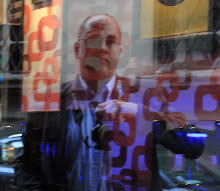 Before I went to Florence for the first time, I had studied art history, seen photos of the major architectural sites and looked at maps. From this information I started to build a conception of the place, bit by bit. I imagined the place and saw in my mind small scenes, vignettes, patterns and shapes that bridged the gaps and connected the received facts. The images of particular paintings, sculptures and palazzi took root and held. My imaginings of streets, interiors and landscapes remained as concrete as smoke.
Before I went to Florence for the first time, I had studied art history, seen photos of the major architectural sites and looked at maps. From this information I started to build a conception of the place, bit by bit. I imagined the place and saw in my mind small scenes, vignettes, patterns and shapes that bridged the gaps and connected the received facts. The images of particular paintings, sculptures and palazzi took root and held. My imaginings of streets, interiors and landscapes remained as concrete as smoke.There is a distance between the reality of desire and the reality of experience.
Flying in over Tuscany, the countryside was hidden from view with a thick layer of fog and cloud. The cover broke for a moment and I first caught a glimpse of the landscape with its shapes of fields dotted by groves of trees accentuated by lines of cypresses far below, all rising and falling with the undulations of the hills. I remember seeing farmhouses and roads down below and my breath caught suddenly at its beauty. I couldn't help it. It didn't look real. Here I was seeing it out the window and I wouldn't have been any more surprised to see a child's hand come down from the clouds to move the toy farmhouse to another hill. I had memorized representations of this landscape by artists like Ambrogio Lorenzetti and Balthus and thought the paintings had taken some liberties. Their views looked abstracted and slightly childlike in their depictions, with an emphasis on the elements of the land forming designs, much like my imaginings. The land as patterns, shapes, lines formed of dots all held within gold, green and earth tones.
Now I knew they had seen it as it is. My imaginings also had held this reality.
The distance between desire and experience had merged.

No comments:
Post a Comment